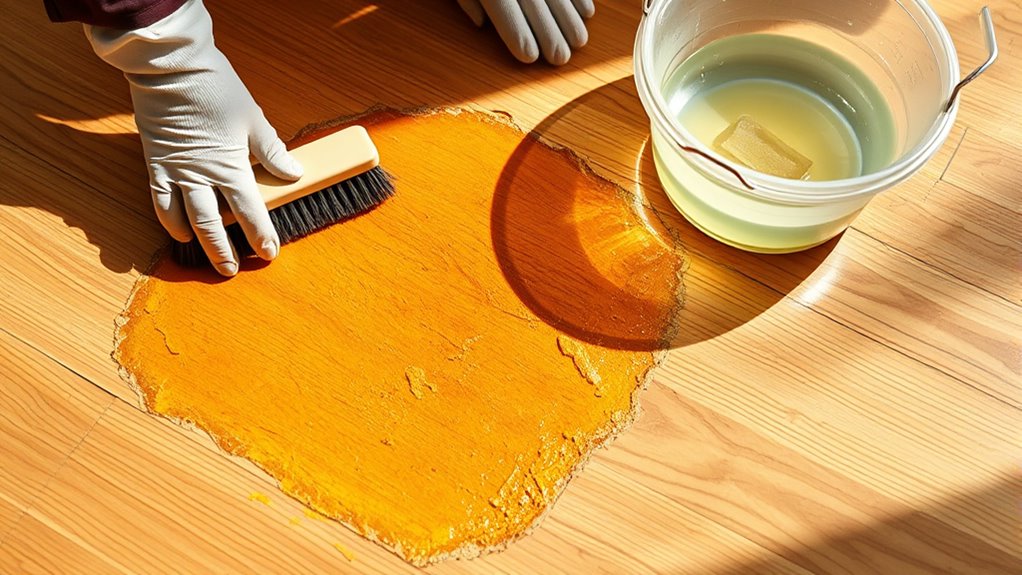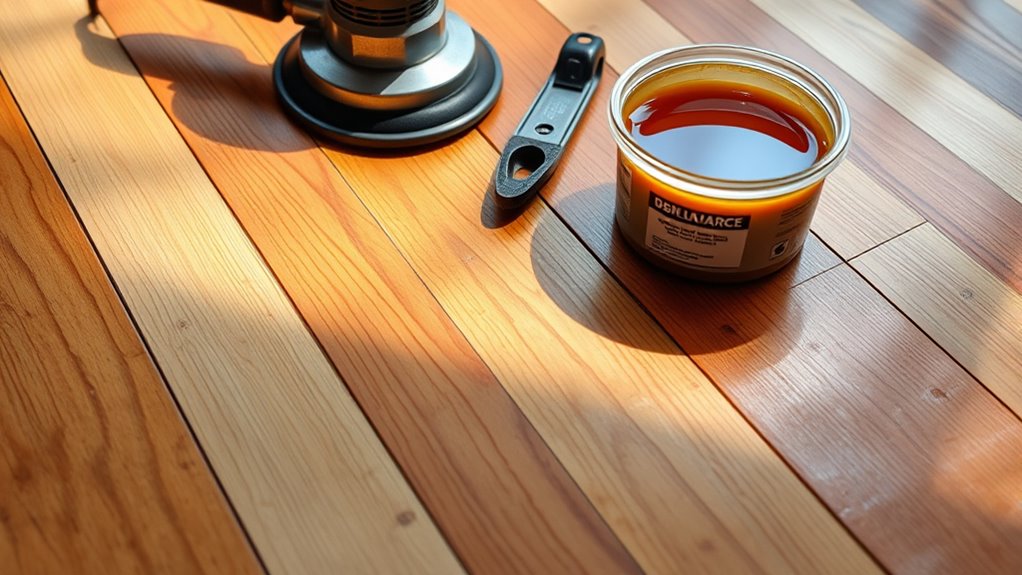First, you’ll assess and clean the damaged area by checking for discoloration or softness, then gently neutralize odors with a vinegar solution. Next, sand the floor using coarse to fine grit sandpaper to remove damaged layers and smooth the surface evenly. Finally, refinish and seal the wood with a durable finish like polyurethane, ensuring even application and proper drying. Following these steps can restore your floor, and there are more tips to help prevent future damage.
Assess and Clean the Damaged Area

Before you begin repairs, start by closely inspecting the affected spots to determine the extent of the damage. You’ll want to evaluate damage carefully, checking for discoloration, warping, or soft spots on the wood. This step helps you decide whether the damage is superficial or more severe, guiding your repair approach. To clean the area, use vinegar diluted with water; it’s a natural way to neutralize urine odors and disinfect the wood without harsh chemicals. Apply the vinegar solution gently with a cloth, then let it dry completely before moving on. Taking these precise steps not only prepares the floor for repairs but also helps you maintain control over the process, so you can restore your wood floor and keep your freedom intact.
Sand and Prepare the Floor
Start by sanding the damaged area to remove the top layer affected by the urine and any lingering stains. Proper floor preparation is vital to guarantee the repair lasts. Use the right sanding techniques—start with coarse grit to remove damage, then finer grit to smooth the surface. Ascertain you sand evenly to avoid uneven patches.
Here’s a quick guide:
| Sanding Technique | Purpose |
|---|---|
| Coarse Grit (40-60) | Remove damaged top layer |
| Medium Grit (80-100) | Smooth rough areas |
| Fine Grit (120-150) | Prepare for finishing touches |
Refinish and Seal the Wood

Apply a high-quality wood finish to restore the floor’s natural beauty and protect it from future damage. Start by choosing the right refinishing techniques—whether you prefer oil-based for durability or water-based for quicker drying and less odor. After sanding, clean the floor thoroughly to remove dust, then apply your chosen finish evenly using a brush or roller. Once dry, explore sealing options to add an extra layer of protection. Polyurethane is a popular choice for its toughness, while penetrating sealers soak into the wood for a natural look. Make sure to follow manufacturer instructions carefully and allow adequate drying time between coats. By refinishing and sealing properly, you’ll extend your floor’s life and enjoy freedom from frequent repairs caused by pet accidents.




